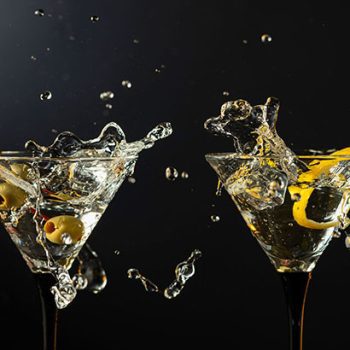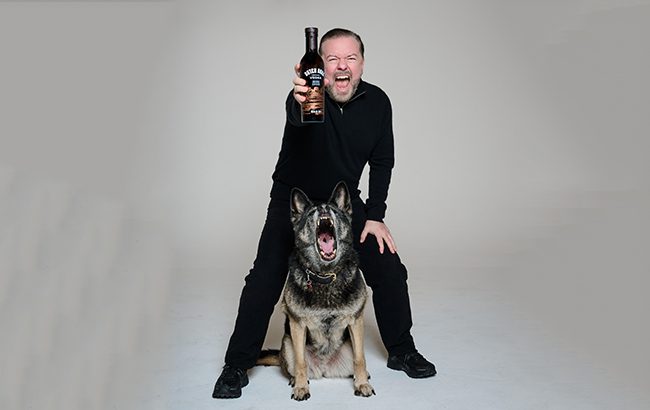Does terroir matter to vodka drinkers?
By Henry JeffreysFor years, vodka producers have stressed the importance of terroir, but how much attention do consumers pay to it?

*This feature was originally published in the April 2025 issue of The Spirits Business magazine.
The British drinks industry was in mourning this January when Diageo announced the closure of Chase distillery and the relocation of production to Scotland. This Herefordshire pioneer created a high-quality British potato vodka that became the pour of choice for bartenders like Alessandro Palazzi at Dukes in London.
Despite this loss, the British vodka scene has never been livelier, with a strong cohort of new pretenders to Chase’s terroir vodka crown. There’s even talk of vodka becoming the new gin. According to Wine and Spirit Trade Association (WSTA) figures, vodka is the UK’s largest spirit by volume — ahead of gin and whisky — and second-largest by value, just behind whisky. While sales are down by about 5% by volume, they’re only down by 1% by value, suggesting premium products are on the rise.
We are unlikely to see a plethora of brands like gin because the barriers to entry are much higher. EU and UK law requires that vodka be distilled to 96% ABV, necessitating expensive equipment. Master distiller Abhishek Banik estimates that the column still he designed for Copper Rivet distillery in Chatham cost £250,000. Chris Fraser, founder of Dutch Barn Vodka, has invested around £4 million in his Yorkshire distillery, Ellers Farm.
However, not all operations require such investment – the Spirit of Birmingham distillery uses a £60,000 high-tech still that can produce everything from vodka to whisky to gin. Brother and sister team Anthony Dillon and Joanie Doyle bring a craft beer mentality to distilling, using a mash bill of unmalted barley, malted oats, rye malt, and chocolate malt.
The versatility of vodka’s base ingredients is remarkable – you can make it from virtually anything, even milk, as Black Cow vodka in Dorset demonstrates. Seb Barnick opened Pleasant Land distillery in Kent with his father and sister, producing vodka from potatoes, apples, strawberries, oats, and other cereals. All retain the distinctive taste of their raw materials. While many major brands distil to 97% ABV, Pleasant Land stops at 96%. “It doesn’t sound like a big difference, but it means 25% more flavour,” Barnick explains.
Celebrity endorsements are also helping to raise the profile of craft vodka. In November 2023 comedian Ricky Gervais became “co-owner of Dutch Barn, and Ellers Farm Distillery because he wanted to work with a sustainable spirits business that’s actually doing some good”, says Fraser. The brand uses locally grown apples, and is B Corp accredited. Most of these new British brands emphasise provenance and sustainability. Pleasant Land uses apples and strawberries rejected by supermarkets, and also produces the Sapling brand, which is also B Corp-certified, fermented with a low-temperature koji yeast, and claims to be “climate positive”.

Bar owner and writer Ryan Chetiyawardana (AKA Mr Lyan) observes: “People are more aware of provenance in general, and are asking questions about where things come from and what goes into them. We’ve definitely noticed more guests and bartenders being receptive to the idea of good-quality vodka that is there to bring character.” Max Venning, director of Three Sheets bars, agrees: “There’s definitely been a growth in appreciation among bartenders of vodka’s versatility.”
Emphasis on craft
Ivo Devereux, co-founder of the UK’s Sapling Spirits, says: “Traditionally, super-premium vodka has been dominated by heritage brands, but there’s a shift towards independent producers that emphasise craft and sustainability.” One major driver in shifting premium vodka away from image-centric marketing is Belvedere. Alice Lascelles, author of The Martini, says: “Belvedere is a big brand that’s done a lot to try and talk about raw materials and terroir (and is now organic).” Chetiyawardana also credits this LVMH-owned Polish brand with changing people’s perceptions of vodka and paving the way for brands such as Potocki from Poland and Dima’s from Ukraine. Both emphasise their grain quality and flavour. Palazzi says: “I like Polish vodka because of the rye, natural vanilla, and nuttiness.”
Much of this newfound appreciation for flavourful vodka is driven by interest in the Vodka Martini rather than sweet cocktails like the Cosmopolitan. Copper Rivet’s Banik says: “Vodka has been hiding behind cocktails for 20-30 years. All those years, marketing taught the industry that vodka shouldn’t have any flavour. Vodka is not necessarily neutral. What Scotland is to whisky, vodka is to Eastern Europe. Our Vela vodka has almost as much flavour as our whisky.”
However, Stuart Ekins, co-founder of Cask Liquid Marketing, which sells premium brands to the on-trade, believes we’re still far from embracing Martinis in the way Americans do. For him, vodka and tonic remains the most popular serve. According to Ekins, the market is highly price sensitive. He works with Copper Rivet on its cheaper Dockyard vodka, made from 100% Kentish grain, but says conversations typically centre on price rather than terroir.
In contrast, for X Muse (pronounced ‘Ten Muse’), which is made with single malt new-make from Edinburgh’s Holyrood Distillery and retails for nearly £60, provenance is a selling point. “It’s very different when you’re talking to a luxury venue,” Ekins notes, “an X-Muse Martini at Claridge’s costs £30.” Spirits like this compete with single malt whisky rather than other vodkas. “We don’t only look at the vodka category at Belvedere,” CEO and president François-Xavier Desplancke told The Spirits Business in an interview last year. “We are looking at the super-premium spirits category.”

In supermarkets, however, price is all-important according to John Vine, spirits buyer at Waitrose. He stocks Sapling and Ramsbury (a wheat vodka from Wiltshire) but warns that though “the provenance and locality of ingredients is increasingly of interest to customers; the question is whether they’re willing or able to pay a premium for those products in the current economic climate”. Brands like Smirnoff, Absolut, and Waitrose’s own labels still dominate. Dawn Davies, head buyer at The Whisky Exchange and Speciality Drinks, agrees: “Customers genuinely consider factors like sustainability, showing more thought about what they’re paying for than before. However, society at the moment is very price-driven, so price still significantly influences purchasing decisions.”
Celebrity power seems to help boost retail presence. Dutch Barn Vodka, for instance, is available in Sainsbury’s and Morrisons. Dima’s founder Dima Deinega is optimistic about upmarket retail: “Retail has been great for us as consumers have often commented on the reasonable price of £35 in-store for the quality they’re getting. We’re fortunate to be selling in places such as Selfridges, Hedonism Wines, and Harvey Nichols.”
Craft producers
Many British brands drew inspiration from American craft distillers like St. George Spirits in California. However, the US market presents challenges, according to Nick Duncan, UK country manager for Noblewood Group, owner of Beluga (now made in Latvia).
He says: “The US vodka market is not in optimal condition overall, with Nielsen IQ reporting a drop of 2.64% compared with 2023. The largest declines are in the super-premium and ultra-premium categories, which have decreased by 8% and 15.4% respectively.”
Conversely, Anthony Packwood, co-founder of Ovo vodka in Florida, cites Grand View Research from 2024 indicating “ultra-premium vodka sales are projected to increase by 12%”. So it’s complicated, clearly. Andrew Friedman, founder of Industry Spirits in Washington State, doesn’t see the same proliferation of new brands as in the UK: “I can’t think of one new premium vodka brand in a while,” he admits. Friedman warns that despite an emphasis on provenance and sustainability, much of the high-end market is still focused on image: “Whether it’s a celebrity, influencer, or company with substantial marketing resources, they can convince a segment of society that Brand X is premium simply because they say so.” As if to prove his point, 1980s action star Dolph Lundgren has launched a vodka brand promoting itself as “the perfect liquid for a vodka world gone soft”.

Palazzi notes that his American customers favour the Vodka Martini – it’s their default choice rather than gin. Unlike in Britain, where most excitement around provenance vodka comes from bartenders, Duncan from Beluga Vodka observes: “Retail in the US has been and continues to be the largest driver of spirits popularity, particularly vodka.”
Looking globally, there are some unique vodkas coming out of unexpected places. Distillery consultant Jamie Baxter mentions a basmati rice vodka from India and Kari potato vodka from Virunga Mountain Spirits in Rwanda. Also, playing on British-Indian flavours is Desi Daru Mango Vodka.
While some new-wave vodkas are highly distinctive, with others the flavours are more subtle, making a hard sell over more established brands. Lascelles compares it to choosing white paint: “You think they’re all the same until you put them side by side, then you totally lose your mind over it.” There are also brands that appear to be made from scratch but are simply made with bulk neutral alcohol put through a pot still.
Nevertheless, compared with 10 years ago, bartenders are genuinely excited about vodka, and there’s no shortage of new brands entering the market with compelling products and stories. As the growth of rye whiskey in the US demonstrates, the bar trade can shift perceptions and revitalise a category. For now, provenance-focused vodka remains a niche interest – but one with growing potential.
Vodka drinkers are becoming more price-conscious, but still want quality
“Consumers are increasingly conscious of quality and product value,” notes Stock Spirits. Vodka is a key component in the company’s portfolio, and Żołądkowa de Luxe a focal point for the business. This search for “quality and product value” has led to a “greater appreciation for vodkas that emphasise craftsmanship and quality ingredients for a fair price”, Stock Spirits says.
Crafted in Lublin, Poland, Żołądkowa de Luxe has positioned itself as an ‘honest vodka’, as per the brand’s recent marketing campaign. Its aim is to offer drinkers full transparency, in keeping with consumer needs and wants. “Our vodka is made from a special blend of corn and triticale, which gives it the perfect smooth taste profile. As for water, we only use our Lublin plant’s own water supply, which is sourced from artesian wells,” the spokesperson continues.
“The premium vodka segment continues to grow, although it still accounts for less than 10% of the total European vodka market, according to IWSR data. That said, the broader trend of premiumisation is also influencing the mainstream market, as consumers become more price-conscious looking for better value for money.”
Is there still a perception among most consumers that vodka should be tasteless? “It depends,” Stock Spirits answers. “In the clear vodka category, purity is key to ensuring a smooth, delicate taste. This makes it ideal for both drinking neat and in cocktails, where a neutral base lets other flavours shine, something younger consumers particularly appreciate.”
Meanwhile, when it comes to the on-trade: “Bartenders appreciate its neutral, delicate character, high-quality and purity, making it a versatile base for well-balanced cocktails.”
Indsustry insights
What does the future hold for vodka brands in terms of blending tradition with modern consumer expectations? How are you balancing the two?
Nick Duncan – UK country manager, Noblewood Group (owner of Beluga)
“The future of vodka lies in balancing timeless production values with the expectations of a modern, self-aware consumer. At Beluga, we remain rooted in traditional craftsmanship, slow filtration, time to rest, and uncompromising standards while presenting the brand through a luxury lens.
“Today’s drinkers want brands that reflect their identity, and give them access to something elevated. That’s why we focus on ultra-premium formats, selective partnerships, and retail visibility that reinforce our position as the reference point for luxury vodka.”
Yuriy Sorochynskiy – CEO, Nemiroff Vodka
“Consumers demand authenticity, but they also crave new experiences. Consumers don’t just buy vodka – they buy a story, a legacy that has stood the test of time. Transparency, quality, and sustainability are no longer optional but the new standard. In a world flooded with fleeting trends, genuine brands are built on history, resilience, and reputations forged over centuries.
“At Nemiroff, our craft dates back over 150 years, surviving wars, revolutions, and changing eras, yet our spirit remains unshaken. Today’s drinkers seek more than quality; they want authenticity, a brand with a soul. The future belongs to those who honour their heritage while proving their relevance in every bottle. Successful brands will dare to push boundaries while staying true to their roots. That’s our spirit.”
If total vodka sales remain stagnant, should the category be worried? And what steps will be key to driving growth?
Zak Oganian – CEO, Origen X (owner of Mikolasch Vodka)
“If total vodka sales remain stagnant, the category should be cautious but not alarmed. Stagnation signals a shift in consumer preferences, not a disappearance. To drive growth, brands must focus on where the consumptions are moving to. There are immediate term shifts, short-term shifts as well as medium- to long-term trends. Each brand must decide if they want to be relevant for each or some of these shifts. This will influence consumer behaviour and ensure continued sales. The key is only two things; speed and quality of execution.
“Overall premiumisation, authentic storytelling, and innovation – especially in craft, organic, and terroir-driven expressions like Mikolasch – will remain medium- to long-term growth opportunities. Vodka will continue to shed its ‘commodity’ image and embrace emotional value and uniqueness. Targeting Gen Z and Millennials through sustainability, transparency, and digital storytelling will be key. Price will be key in the immediate to short term. Reinvention, not reinvention fatigue, is critical.”
What does the future hold for vodka brands in terms of blending tradition with modern consumer expectations? How are you balancing the two?
Rahul Mehra – CEO and co-founder, Third Eye Distillery
“The future of vodka lies in a seamless blend of conventional technique and sustainability. Sustainability is no longer optional – it’s essential, and both producers and consumers are growing more and more mindful of the same. Vodka has also evolved beyond a party staple into a spirit to be savoured. Today’s discerning drinkers seek quality, craftsmanship, and a meaningful connection to what they consume. A locally rooted, home-grown brand offers familiarity, trust, and a deeper cultural resonance, making it more relatable. Authenticity and transparency matter more than ever; consumers want to know where their vodka comes from and what makes it exceptional.
With Short Story Vodka, we chose to keep it simple, and decided to let the liquid speak for itself; crafted as it should be – no gimmicks, no getting lost in jargon – just an uncompromising expression of a good vodka.”
Related news
Is higher-end vodka in trouble?
